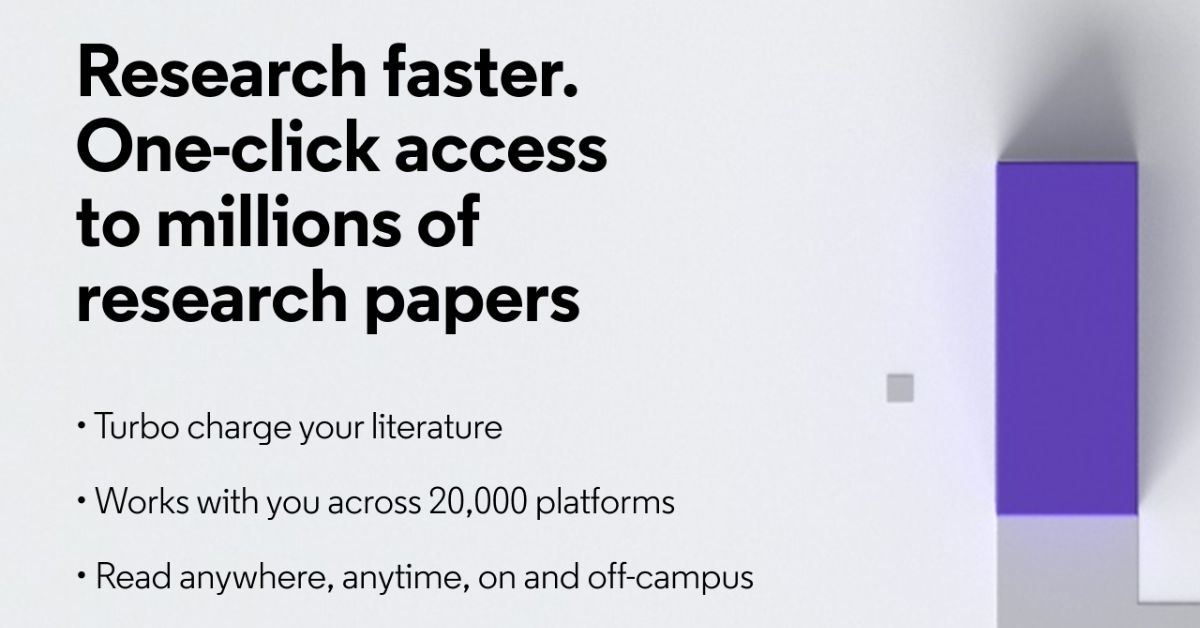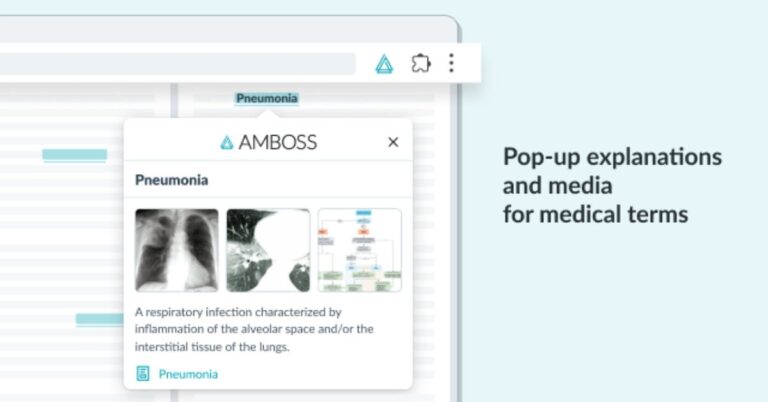Researchers spent countless hours hunting for journal articles, managing references, and navigating paywalls. Those who wants to make their tasks more efficient are on the lookout for tools that can make their research process smoother. That’s when I stumbled across the EndNote Chrome Extension (formerly Kopernio). It promised one-click access to full-text PDFs from academic journals, and let me tell you—it delivered.
Whether you’re a student, academic, or professional researcher, the EndNote Click Chrome Extension can dramatically improve how you access, store, and manage your research content. In this review article, I’ll break down everything you need to know about it—how it works, what it offers, and whether it’s right for you.
What is the EndNoteChrome Extension?
The EndNote Chrome Extension, developed by Clarivate (the makers of Web of Science and EndNote reference manager), is a powerful browser add-on for Chrome that helps researchers find and access full-text scholarly articles with just one click. Think of it as a personal research assistant that tags along while you browse, hunting for PDFs behind paywalls or tucked away in open-access repositories.
It’s specifically designed to streamline the chaotic journey from abstract to article by connecting with your institutional subscriptions, open-access resources, and even preprint archives. When you’re on a site like PubMed, arXiv, Web of Science, or even Google Scholar, the extension automatically searches for the best version of the article—whether that’s the publisher’s PDF or an open-access version.
How the EndNote Click Chrome Extension Works
The EndNote Chrome Extension may seem like a simple browser add-on, but it’s doing a lot of smart work behind the scenes to make research easier. Whether you’re a student, professor, or independent researcher, understanding how it works can help you take full advantage of its features—without needing to be tech-savvy.
Here’s how it works in a straightforward, step-by-step way:
1. It Recognizes Research Articles Automatically
As you browse academic websites—like Google Scholar, PubMed, or Web of Science—the extension quietly scans the page for research content. It picks up key details like the article title, DOI (Digital Object Identifier), and journal name. This allows it to recognize when you’re looking at a scholarly article.
2. It Checks Your Access
Once it identifies an article, the extension checks if your university or institution has a subscription that gives you access. If access is available, it fetches the full-text PDF directly through your institution’s library system. This means no more digging through multiple websites or logging in to different portals.
3. It Looks for Free Versions Too
If your library doesn’t have access to the article, the extension doesn’t stop there. It searches reputable open-access sources—like PubMed Central, arXiv, and other academic repositories—to see if a free version of the article is available. If it finds one, it offers that PDF instead.
4. One-Click PDF Download
When a full-text version is available—either through your institution or a free source—a button will appear on your screen that says something like “View PDF” or “Download PDF.” Clicking it opens the article immediately, saving you time and hassle.
5. It Saves Everything to Your Library
Every article you download is automatically saved in your personal EndNote Click library. This is your cloud-based research hub where all your PDFs are stored, searchable, and neatly organized. You can access them anytime, from any device, without the mess of scattered folders.
6. Always Ready, Wherever You Are
Because it runs in your browser, the extension works wherever you are—at home, in the office, or on campus. As long as you’re signed in, it will keep helping you find and access research without interruption.
How to Use the EndNote Chrome Extension
Using the EndNote Chrome Extension is quick and straightforward. Here’s how to get started in just a few easy steps:
Step 1: Install the Extension
- Go to the Chrome Web Store and download the extension.
- Click “Add to Chrome” and confirm the installation.
Step 2: Create an Account
- After installation, sign up for an EndNote Click account using your institutional email.
- This links your account to your library’s subscription access.
Step 3: Connect to Your Library
- Choose your university or institution from the list.
- Sign in through your library’s login page if prompted.
Step 4: Search for Articles
- Visit academic platforms like Google Scholar, PubMed, or Web of Science.
- When you find an article, the extension will automatically check for a full-text PDF.
Step 5: View or Download the PDF
- Click the “View PDF” or “Download PDF” button that appears.
- The file opens in a new tab or saves directly to your device.
Step 6: Access Your PDF Library
- All saved PDFs are stored in your EndNote Click Library.
- You can access it anytime at click.endnote.com account to manage or export files.
This process makes accessing research seamless—no more switching tabs, logging into multiple sites, or dealing with broken links.
Top Features of the EndNote Chrome Extension
Let’s get into the meat of it—what exactly does this extension offer, and how does it help?
One-Click Access to PDFs
This is the hallmark feature. No need to dig through library catalogs or publisher websites. As soon as you’re on an article page, it automatically searches and offers a PDF download link if available.
Open Access and Institutional Login Integration
Even if your institution doesn’t have a subscription to a specific journal, the extension looks for legally available open-access versions, including preprints. It also securely integrates with your library login—so once you’re in, you stay in.
Reference Manager Syncing
Since it’s part of the EndNote ecosystem, you can directly sync articles and PDFs to your EndNote library. But it also plays well with other reference managers like Zotero, Mendeley, and Dropbox.
Personal PDF Library
Every time you download a paper, it gets stored in your personal EndNote Click library in the cloud. It’s searchable, accessible from anywhere, and keeps your PDFs organized without the chaos of desktop folders.
Cross-Platform Compatibility
Though it’s a Chrome extension, your EndNote Click library is accessible from any browser. This means you can search and manage your downloaded articles even when you’re away from your main device.
Real-World Benefits for Researchers
So what has this meant for me personally? Quite a few things:
- Saved Time: I used to spend 10–15 minutes just trying to access a single paper. Now I often get the PDF in under 10 seconds.
- Better Organization: With all my PDFs in one place, I’m not scrambling through folders or cloud drives anymore.
- Less Frustration: Hitting a paywall is no longer a dead end. The extension often finds a legitimate open-access version instantly.
So instead of copying and pasting DOIs into your library portal or publisher websites, you can just open Google Scholar, PubMed, or Web of Science, search for your topic, and let EndNote Click do the heavy lifting in the background. It’s that simple.
Who Should Use It?
The EndNote Chrome Extension is ideal for:
- Graduate students and PhD researchers who need quick access to scholarly articles.
- Faculty members and lecturers doing ongoing research.
- Medical professionals and scientists reading up on the latest studies.
- Anyone affiliated with a university that has academic journal subscriptions.
Even if you’re not tied to an institution, it’s still useful for finding free versions of papers that are publicly accessible.
Pros and Cons: A Balanced Look
Let’s weigh the highs and lows.
Pros
- Super easy to install and use.
- Saves hours every week for researchers.
- Integrates seamlessly with EndNote and other reference tools.
- Supports a wide range of academic sites and journals.
- Stores your downloaded PDFs in a personal cloud library.
Cons
- Only available for Chrome (no Firefox or Safari versions yet).
- Not all articles are always accessible (depends on subscriptions and availability).
- Might occasionally conflict with other Chrome extensions.
- Initial setup with institutional login can confuse some users.
Is the EndNote Chrome Extension Safe?
Yes. EndNote Click is developed by Clarivate, a reputable name in academic software. It uses encrypted connections and complies with standard data privacy policies. Your institutional credentials are never stored by the extension itself—they’re used via your library’s official authentication system.
Final Verdict: Is the EndNote Chrome Extension Worth It?
Absolutely. If you’re doing any kind of academic research and you’re tired of bouncing between tabs, logins, and paywalls, the EndNote Chrome Extension is a game-changer. It’s not just a convenience—it’s a productivity booster.
Sure, it’s not perfect. But the pros far outweigh the cons, especially if your institution supports a wide range of journal access. For a free tool, it delivers tremendous value. And if you’re already an EndNote user, the integration is seamless.



